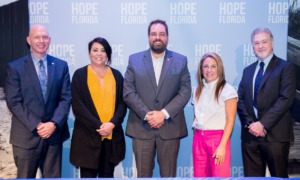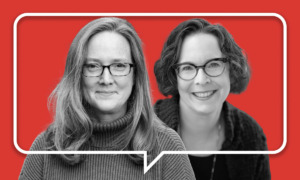Nothing rankles me more than poverty and our American tradition of ignoring it. For kids, poverty is the ultimate risk factor. While poor families and poor communities can and do raise great kids, the probabilities of success under such conditions are so much lower.
We should never forget the mammoth proportions of this national blemish. Forty percent of 6- to 17-year-olds live in families earning twice the federal poverty level or less.
But I see new energy being mobilized around this issue, with nine states that have recently created bipartisan commissions to confront it. The Delaware Child Poverty Task Force hopes to cut the number of children living in poverty in half by 2017. The Connecticut Child Poverty Prevention Council plans to reach the same goal by 2014. Louisiana has established coalitions in 64 communities to reduce poverty. Maine, Iowa, Alabama, New York and Oregon have launched similar efforts.
Then there’s my state, Minnesota. Our Commission to End Poverty, established by the state Legislature in 2006, includes 10 state senators and 10 representatives. The goal is audacious: to end poverty in Minnesota by 2020. The principles that guide the commission forcefully name the three major actors that must be mobilized and networked if we are to succeed.
One, of course, is government, which must re-imagine, organize and fund a slew of supports and services. These include job training, housing, health care, education, job growth, wages and benefits, nutrition and initiatives for the disabled and the homeless.
The second is the private sector, including businesses, nonprofits and faith-based organizations.
The third is the citizens of Minnesota, mobilized in hundreds of communities to seek and promote the common good.
I respect the commission’s logic model: equipping and mobilizing the government, the private sector and the people. Its pathways, however, are complicated. So when I recently testified at a commission hearing, I made two major points:
1. Nothing of long-term significance will happen unless the public and its will are mobilized. The private sector and legislators will not stay the course unless a critical mass of our citizens comes to see children’s well-being as inextricably linked to everything we hold dear.
2. The best way to create this citizen movement is by activating and supporting the core principles of community-based youth development. For example, we know there is a set of supports and opportunities that can put all kids on a path to a hopeful future. I call them developmental assets. We could also call them developmental investments, promises or building blocks. They improve life chances for youth in all income brackets.
The capacity to build these supports for all kids requires a community of people and social institutions choosing to make asset-building the highest community priority. When a community so unites and acts, great things happen in school achievement, health, safety and inclusion. One reason this happens is that youth development can generate a vision of supports that unites many sectors and citizens in a shared purpose. With a shared purpose, we get to the holy grail of the common good, that elusive but achievable ingredient critical for poverty reduction.
I’ve seen community-based youth development mobilize and energize many dozens of cities. But how do we unite a statewide effort involving hundreds of municipalities?
I took my shot at the commission hearings, beginning with the idea that a statewide poverty reduction plan must dedicate 10 percent or more of its funding to making asset-building a centerpiece of policy and community life, with a purposeful eye toward doubling these efforts for low-income families. I offered six recommendations:
• Drive the philosophy of positive youth development into the DNA of all of the places youth spend time, including schools, youth organizations, athletic fields and congregations.
• Embed positive youth development concepts in how social service delivery systems interact with families and youth.
• Build a statewide training system for Minnesota citizens, seeking to reach and teach one-quarter of the population to know and apply asset-building principles.
• Create new dissemination mechanisms to reach and teach parents on how to create an asset-building family and to help build positive relationships with local youth.
• Provide small annual grants ($50,000 to $100,000) to communities committed to launching and sustaining a city-wide initiative.
• Enable these community initiatives to network with one another in eight to 10 regions across the state.
It’s hard to know where all of this will lead. For now, based on follow-up conversations with commission members, I’m feeling optimistic.
That’s because the core idea is sticking: that reducing poverty requires both an investment in economic development and an investment in community-based positive child and youth development. One without the other will fail. Done well, the combination could be one of our most significant successes.






























